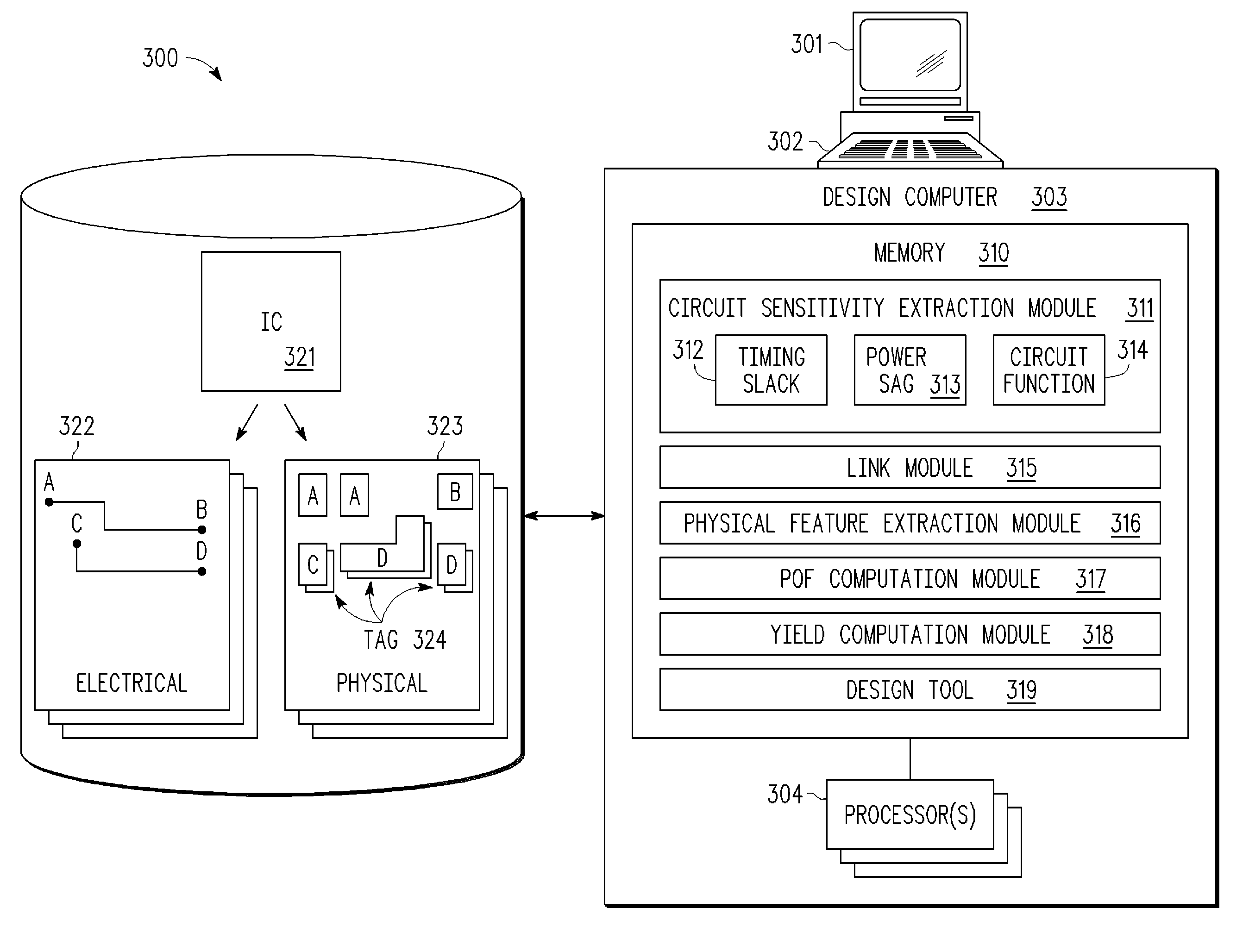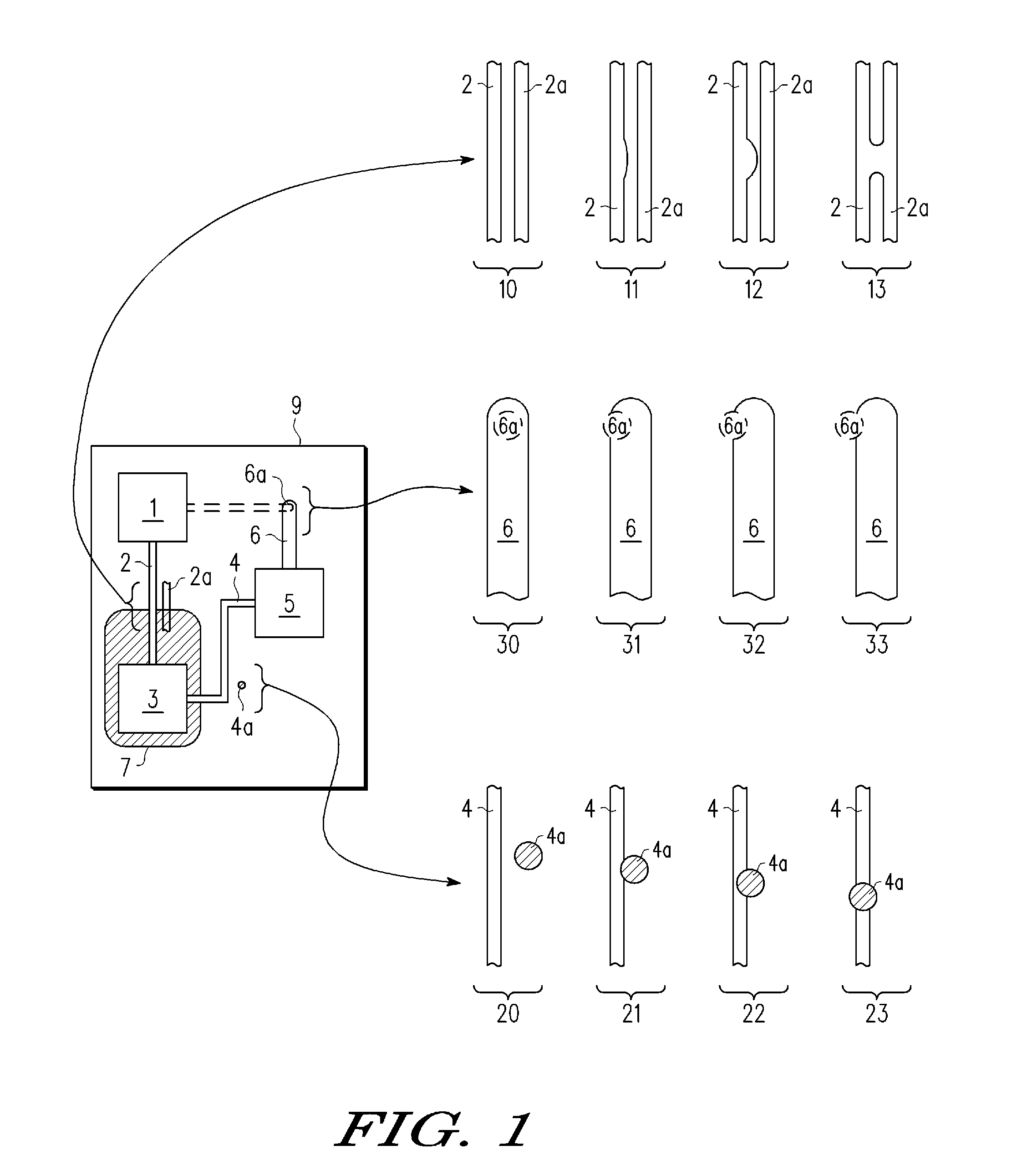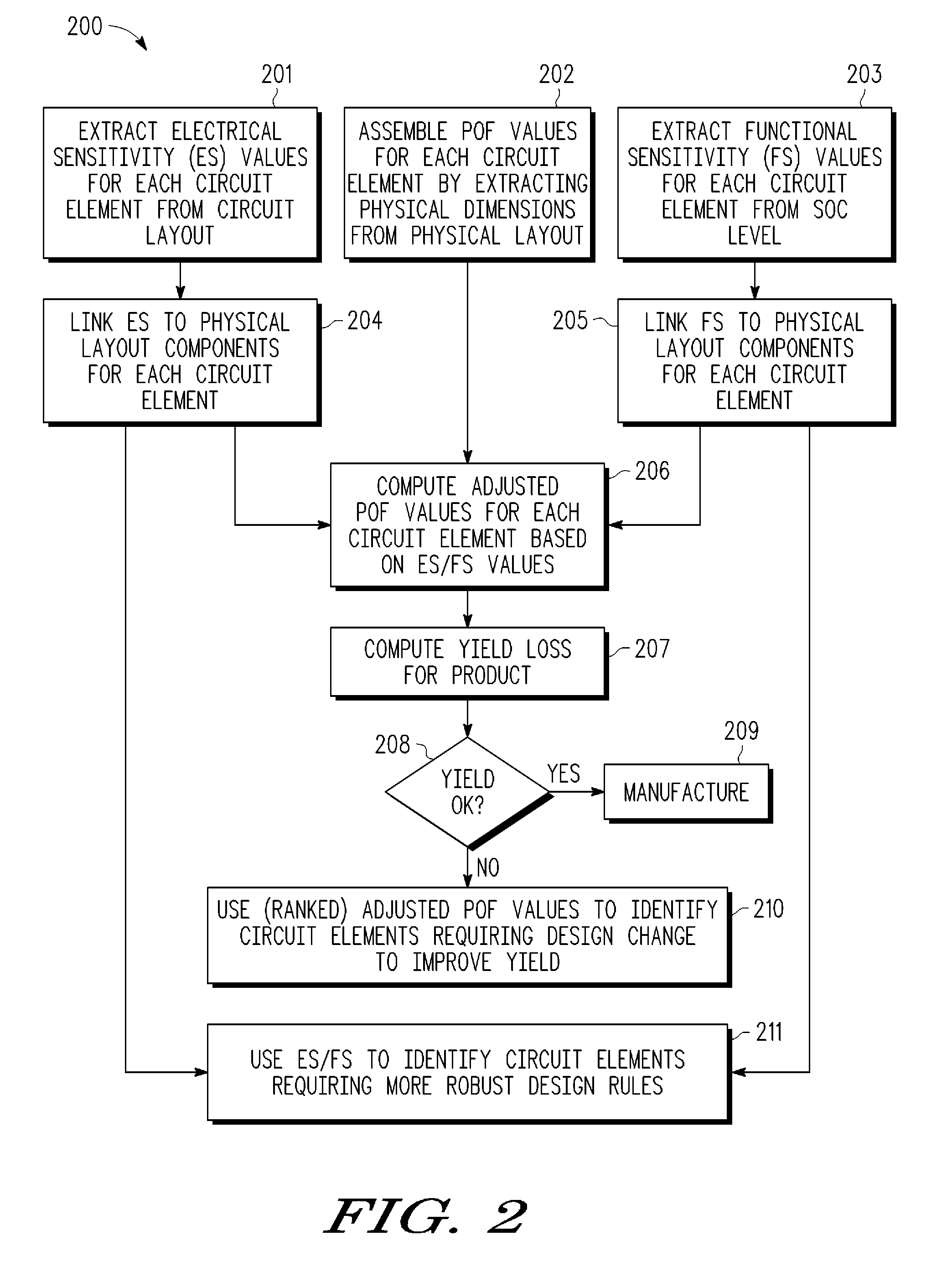Yield analysis and improvement using electrical sensitivity extraction
a technology of electrical sensitivity and yield analysis, applied in the direction of stochastic cad, cad techniques, instruments, etc., can solve the problems of different types of circuit failure, short defects, and increasing difficulty for semiconductor designers to estimate and realize device yields
- Summary
- Abstract
- Description
- Claims
- Application Information
AI Technical Summary
Benefits of technology
Problems solved by technology
Method used
Image
Examples
Embodiment Construction
[0013]A method and apparatus are described for determining an accurate yield prediction for an integrated circuit by combining conventional yield loss analysis (such as extracted from physical dimension information concerning a circuit layout) with extracted electrical sensitivity and / or functional sensitivity information for circuit elements (such as nets connecting logic blocks or other signal lines) to obtain an actual performance-based probability of failure (POF) for the overall circuit. As a preliminary step, electrical and / or functional sensitivity information is extracted for one or more circuit elements. In various embodiments, electrical sensitivity information can be a function of the timing slack associated with the circuit element, where the timing slack is a measure of how quickly the circuit element must deliver a signal, or in other words, how much time there is between when a signal arrives at its destination and when the clock at the destination is triggered. Thus,...
PUM
 Login to View More
Login to View More Abstract
Description
Claims
Application Information
 Login to View More
Login to View More - R&D
- Intellectual Property
- Life Sciences
- Materials
- Tech Scout
- Unparalleled Data Quality
- Higher Quality Content
- 60% Fewer Hallucinations
Browse by: Latest US Patents, China's latest patents, Technical Efficacy Thesaurus, Application Domain, Technology Topic, Popular Technical Reports.
© 2025 PatSnap. All rights reserved.Legal|Privacy policy|Modern Slavery Act Transparency Statement|Sitemap|About US| Contact US: help@patsnap.com



